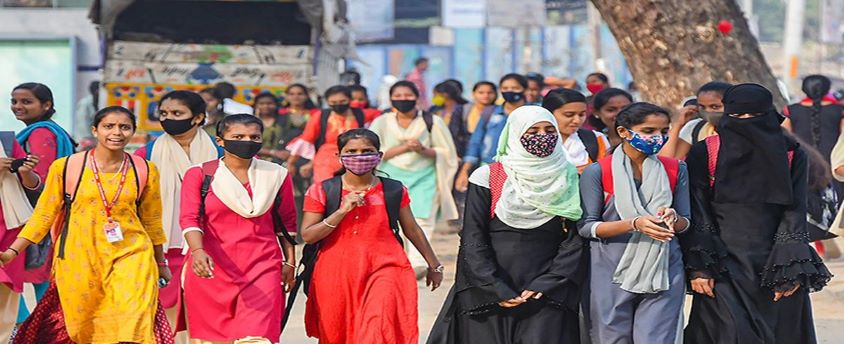Karnataka Hijab Ban
04, Mar 2023

Prelims level : Policies
Mains level : GS-II Government policies and interventions for development in various sectors and issues arising out of their design and implementation.
Why in News?
- Chief Justice of India D.Y. Chandrachud has recently said he may “create a Bench” to hear the hijab ban case from Karnataka, though not actually zeroing in on a date of hearing.
What was the split verdict given previously?
- Justice Gupta said ‘secularity’ meant uniformity, manifested by parity among students in terms of uniform.
- Justice Gupta held that adherence to uniform was a reasonable restriction to free expression.
- The discipline reinforced equality. The State had never forced students out of State schools by restricting hijab. The decision to stay out was a “voluntary act” of the student.
- In his divergent opinion, Justice Sudhanshu Dhulia said secularity meant tolerance to “diversity”. Wearing or not wearing a hijab to school was “ultimately a matter of choice”. For girls from conservative families, “her hijab is her ticket to education”.
- Asking the girls to take off their hijab before they enter the school gates, is first, an invasion of their privacy, then it is an attack on their dignity, and then ultimately it is a denial to them of secular education.
- There shall be no restriction on the wearing of hijab anywhere in schools and colleges in Karnataka.
- He further remarked that one of the best sights in India was a girl going to school like her brother.
- The case would now be re-heard by a larger Bench.
How is religious freedom protected under the Constitution?
- Article 25(1) of the Constitution guarantees the freedom of conscience and the right freely to profess, practise and propagate religion.
- It is a right that guarantees negative liberty — which means that the state shall ensure that there is no interference or obstacle to exercising this freedom.
- Limitations: Like all fundamental rights, the state can restrict the right for grounds of public order, decency, morality, health and other state interests.
Observations previously made by the Supreme Court in this matter:
- People have a right under the Constitution to profess, practice and propagate religion (Article 25).
- Every person is the final judge of his/her choice of religion or who their life partner should be. Courts cannot sit in judgment of a person’s choice of religion or life partner.
Religious faith is a part of the fundamental right to privacy:
- Shirur Mutt case in 1954: The doctrine of “essentiality” was invented by the Supreme Court. The court held that the term “religion” will cover all rituals and practices “integral” to a religion, and took upon itself the responsibility of determining the essential and non-essential practices of a religion.
What are the court’s previous rulings on Hijab?
- In Amna Bint Basheer v Central Board of Secondary Education (2016), the Kerala High Court held that the practice of wearing a hijab constitutes an essential religious practise but did not quash the dress code prescribed by CBSE. It rather provided additional safeguards, such as examining students wearing full sleeves when needed.
- In Fathima Tasneem v State of Kerala (2018), Kerala HC held that collective rights of an institution would be given primacy over the individual rights of the petitioner. The case involved two girls who wanted to wear the headscarf. The school refused to allow the headscarf. However, the court dismissed the appeal as students were no more in the rolls of the respondent-School.






